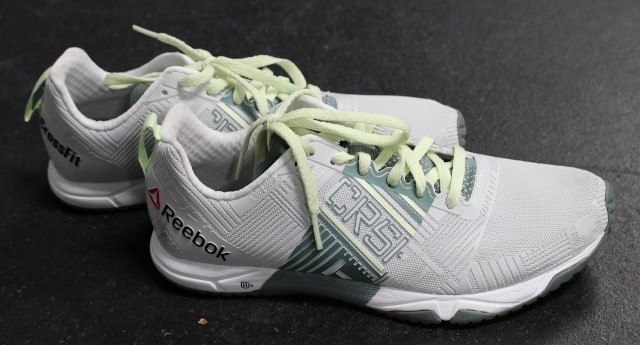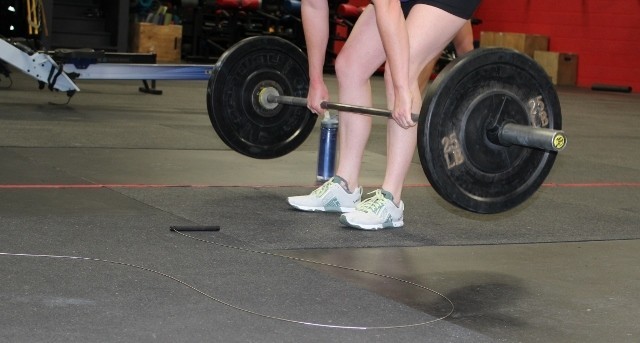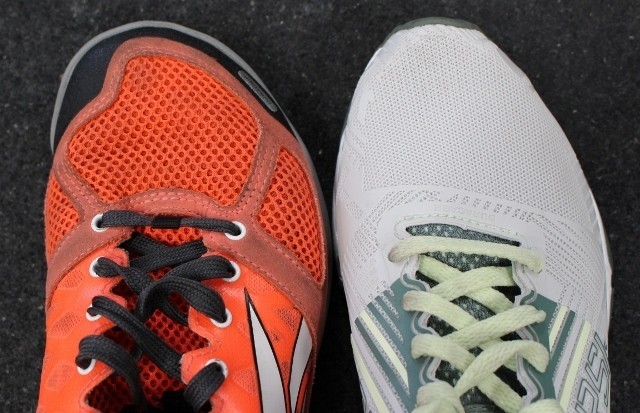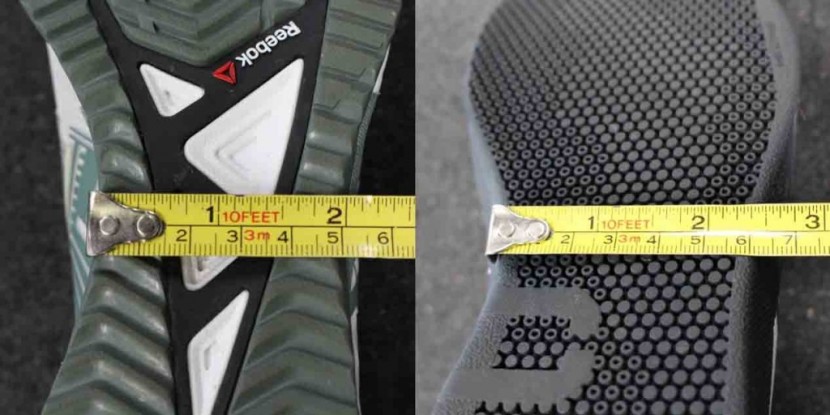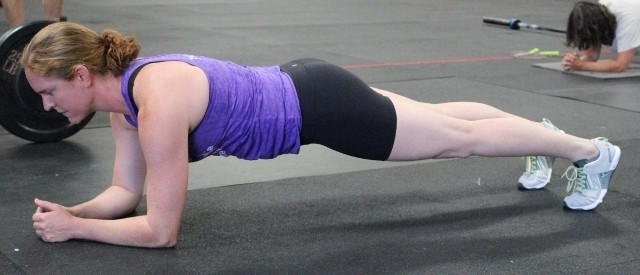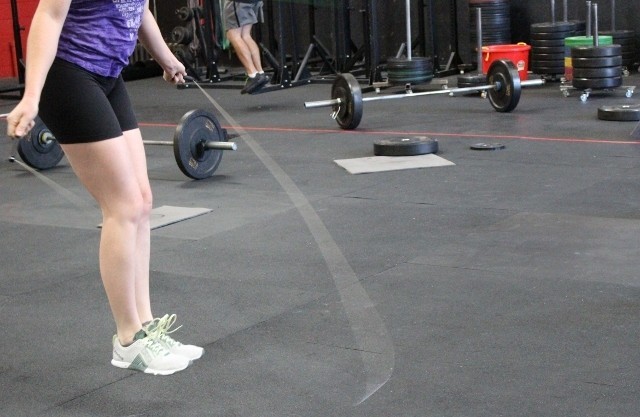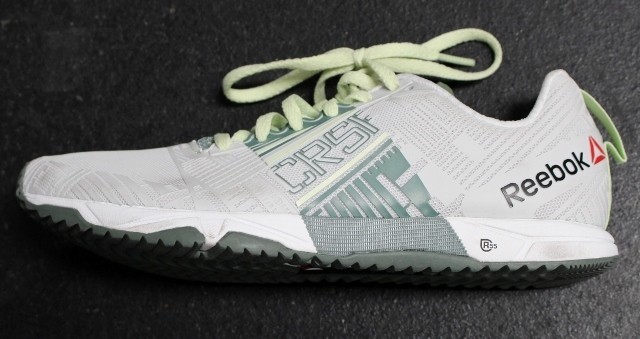Reebok Sprint 2.0 - Women's Review
Our Verdict
Our Analysis and Test Results
The Reebok Sprint 2.0 is marketed as a “WOD-friendly trainer.” It has a stretch mesh and rubber upper with a heat-wicking lining, a 3 mm heel to toe drop and weighs 7.1 ounces (201 grams).
Weightlifting
The Reebok Sprint 2.0 isn't designed to handle heavy loads; this is not the pair to wear for one rep max attempts. The 3 mm toe drop combined with a soft sole forced us to come up onto our toes during our heavier lift attempts. If you want a shoe that can definitely stand up to some heavier work then check out our Editors' Choice winner, the Nike Metcon 3. The Metcon was our clear favorite for heavy deadlifts, cleans, and snatches. However, this model is a great shoe for metabolic conditioning workouts that include light lifting in combination with running or jumping movements.
Running
This model was the only shoe to score a 10/10 for running. Because it is a versatile shoe for CrossFit, we chose the Reebok Sprint 2.0 as our Top Pick for Running WODs. One of the perks of running in this shoe over any of the Nanos, specifically the Reebok Nano 2.0 - Women's, is the narrower toe box. The wide toe box on the Nano 2.0 feels sloshy, whereas we could trust our footing more with the Sprints, allowing us to push harder on our runs.
Sensitivity
Trying to find the right sensitivity for a CrossFit shoe is always a challenge. You want enough cushion for running, and yet you don't want an overly soft sole. Squishy soles make it hard to feel where your bodyweight is situated on your feet during lifts. This shoe does a great job of bridging that gap. However, our Best Buy winner, the Nano 2.0, was slightly better in the sensitivity category. The sole on the Nano 2.0 is firmer than this model, which allowed us to get a better set up position during lifts compared to the Sprints.
Support
This shoe lacked the support we needed for our heavy lifts. One tester described the shoes as “tippy” when working on heavy deadlifts. The tippy feeling of the shoe comes from the narrow width around the arch. During lifting movements it is important to drive your knees out while powerfully screwing your feet firmly into the ground. The narrow sole lacked the support we needed for such a movement. The Reebok Lite TR - Women's has a more supportive width than this model as well as an over-the-ankle design.
Protection / Durability
Another area where this shoe pleasantly surprised us was during rope climbs. At first glance, it looks too light and minimal for good protection on the rope. However, there is a band of extra grippy material running diagonally along the sides of the shoe that really helped us dig into the rope and protect our feet from friction. We were also happy that the sole and the upper of the shoe didn't suffer any damage after sliding down the rope. The Reebok Nano 7.0 - Women's was also designed to stand up to the potential damage of rope climbs with the addition of Kevlar to the uppers. While the Kevlar upper does make the shoe durable, one athlete found them to be “slick as snot” and didn't feel as though she could trust her feet on the rope.
Breathability
We were very pleased with the breathability of this shoe. The thin, lightweight uppers allowed for great airflow even with the narrow band of extra rubber for rope climb protection. The supposed “heat-wicking lining” really does keep you cooler than other models out there. While you want the extra protection that a rubber upper provides, too much of it impedes airflow and leaves you with hot and uncomfortable feet.
Comfort
This shoe was one of our highest ranking shoes according to comfort. It has enough arch support and give in the sole to be worn on your feet all day. Shoes that are good for weightlifting typically do not have flexible soles. This model has enough flexibility to be a comfortable and versatile option for a broad spectrum of movements while still performing well at light weightlifting.
Best Applications
As our Top Pick for Running WODs, the Reebok Sprint 2.0 is clearly perfect for runs. Metabolic workouts that combine runs with other high intensity movements are this shoe's forte. Even if your workout calls for some light to moderate lifts thrown into the mix, the Sprint is up to the task. If you are really searching for the one shoe that can do all this plus handle heavy loads, then our Editors' Choice winner, the Nike Metcon 3, is the way to go.
Value
Retailing for $110, the Reebok Sprint 2.0 is situated right at the middle of the price range of the shoes we tested in this review. However, taking into consideration the overall versatility of this shoe, we do feel it is a good value. If you are hoping to spend less than a hundred dollars on your next pair, check out our Best Buy winner, the Reebok Nano 2.0. It is slightly less expensive than this model and is also a versatile and high-performing shoe.
Conclusion
The Reebok Sprint 2.0 is our new Top Pick for Running WODs. With a narrower toe box than the Nanos, our feet felt more stable during sprints. While we were comfortable with light to moderate weight lifts, we did not like these shoes for heavier attempts. The softer sole caused our weight to shift forward onto our toes versus allowing us to keep our weight further back. The soft sole has its advantages in other areas though. We loved how the bottoms of our feet were cushioned during plyometrics and double unders. We also appreciated the extra grippy material up the sides of the shoes during rope climbs. A long day of coaching also proved to be no problem for these shoes — they remained comfortable all day long, which is not something we could say about many other shoes out there.



